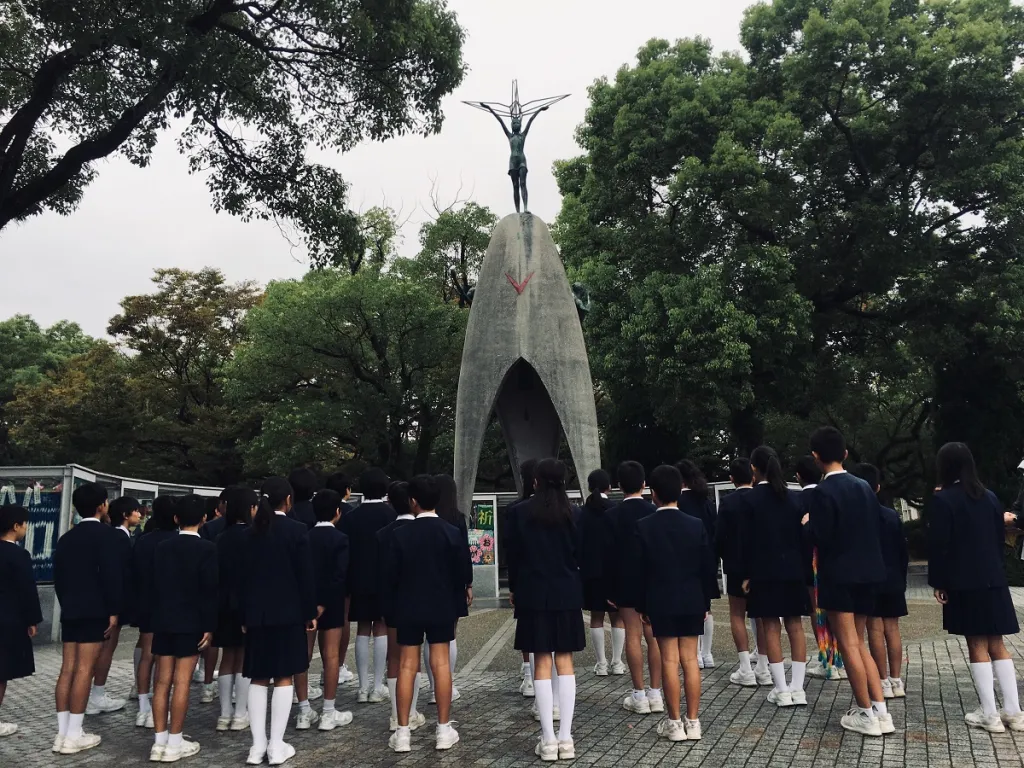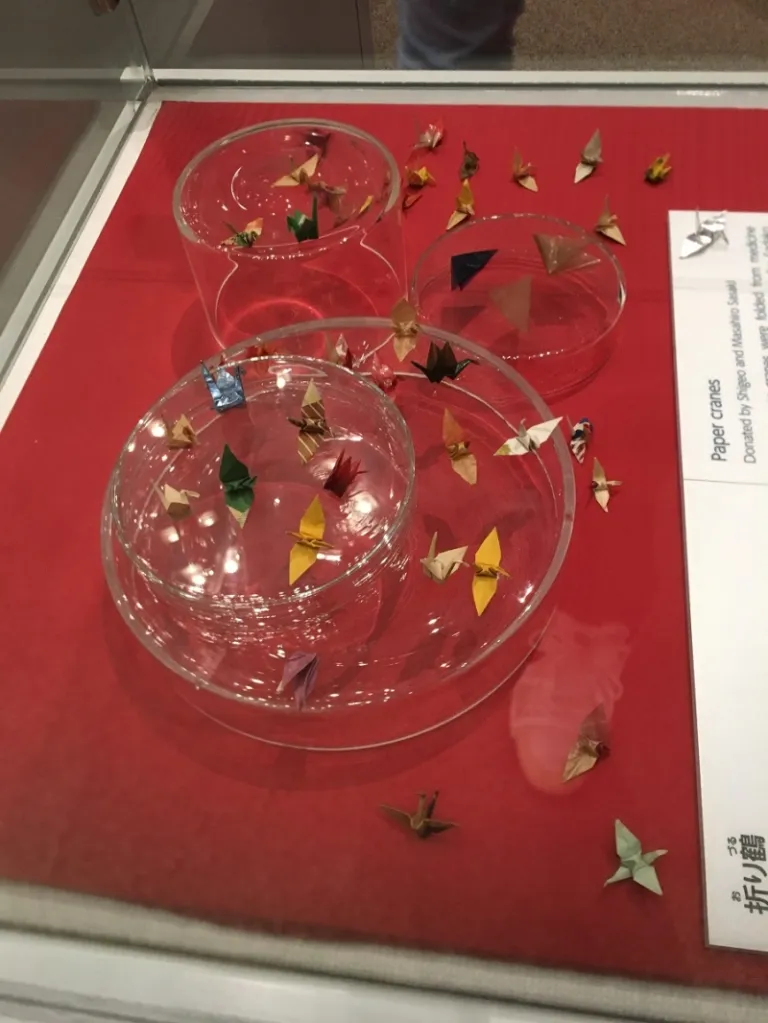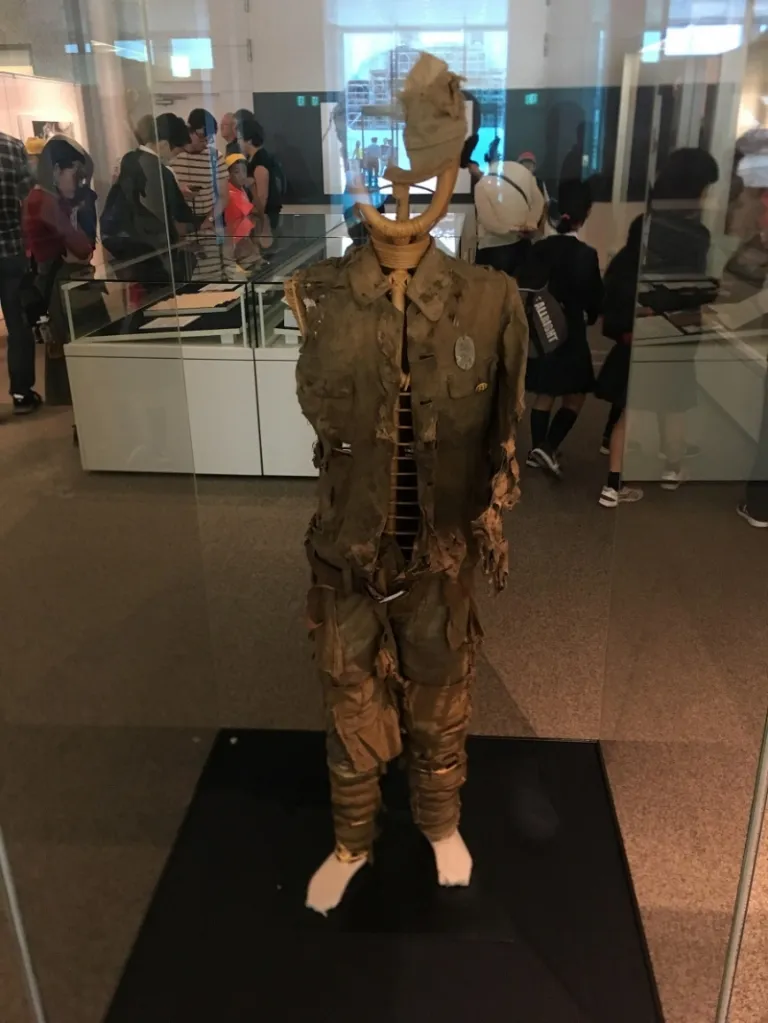From Pikachu snacks to Totoro cream puffs, here are 10 themed cafes in Japan that prove café hopping should be part of your travel itinerary.
What a Young Boy and Girl from Hiroshima Taught Me

Contributed by Bryan Mendoza
Hiroshima left me with memories I’m sure I will never forget. Sure, I learned about Hiroshima in textbooks. I’ve heard of it countless times in history lectures. But visiting this place took learning to a whole different dimension. I saw war in its ugliest, most devastating form. I understood the gravity of its effect on the innocent. I saw something I have never seen or heard of before.
Where memoirs of the victims and their relatives are displayed, I met these two kids whose stories of resilience and bravery not only struck a cord but left a lasting impact on my heart and memory.
Also read: Spring in Japan – Reflections from My First Solo Travel
The story of Sadako Sasaki
Born in Hiroshima, she was only two years old when the atomic bomb was dropped in their city. She was blown out of the window, two kilometres from ground zero.
Sadako grew up like any girl. She had an active life until one morning of October — just short of ten years after the atomic bombing — she was diagnosed with leukemia brought on by the radiation. In the hospital, she started folding paper cranes. Legend has it in Japan that if one could fold 1,000 paper cranes, then his or her wish will be granted. Sadako would fold paper cranes day and night. When paper was scarce, she would make do with whatever paper she found in the hospital. Her relatives, friends, and classmates also pitched in.

The night of 25 October, after her 644th paper crane, Sadako passed away. Her burial was attended by her classmates and friends, in their hands were the remaining 356 cranes they folded on her behalf.
Today, the Hiroshima Peace Memorial Park stands in her honour. Sadako may have failed to reach the 1000th mark but her message resonates crystal clear to us who hear her story: There is no winner in war. Always, it’s the innocent ones that pay the heftiest price.

I slipped two paper cranes out of my bag and placed it at the base of her statue, on top of the many paper cranes sent by children from all over Japan. In so doing, I echoed the same wish engraved on her pedestal:
“This is our cry. This is our prayer. Peace in the world.”
School children were offering their own paper cranes, songs, and prayers in front of Sasaki’s statue.
The Story of Yasuyoshi Amano
Yasuyoshi Amano was only 13 when the world’s first atomic bomb was dropped in Hiroshima. He was inside the classroom, 900 metres from the bomb’s hypocentre. His mother, waiting for her only child to return home, didn’t learn about where he was until a day after. He was barely recognisable. He had a huge hole under his ear, his body was bloodied with heavy injuries.

Lying on his bed, Yasuyoshi swore that he would one day travel the world. His mother started crying as she knew there was no way her son would make it. Between life and death, in his worst state of delirium, Yasuyoshi muttered his final words:
“Dad is waiting.”
He said that his father, who had died the year he was born, was waiting for him. Staring at his mother’s eyes welled up with tears, Yasuyoshi took his last breath. “[When my son died], it was all sadness … All I could do was cry and cry; that boy was what I had lived for…”
A month after my stay in Hiroshima, I chanced upon this photo of Yasuyoshi. His smile — sweet yet harrowing — seems to speak to me, wishing for me to do that one thing I failed to do after my Hiroshima trip. He wants me to share his story.

After the bombing, civilians flocked to the nearest river. Their skin was peeling off, their eyes bulging out. You could hear crying and screaming and pleas for water.
In an instant, the river turned red.
Also read: Paradise Lost, Paradise Found in Hamaguchimachi, Japan
Travelling to Hiroshima totally changed my outlook on certain things I thought I already knew. If the world needs a reminder of the destruction war brings, it rests upon Hiroshima. It is a powerful reminder of how important history is so as to not resurrect the horrors of the past and perhaps get closer to everyone’s hope of enduring world peace.
Published at
About Author
Bryan Mendoza
Subscribe our Newsletter
Get our weekly tips and travel news!
Recommended Articles
10 Cutest Cafes in Japan That Are Totally One of a Kind 10-day Christmas and New Year Japan Trip: Complete Travel Itinerary Celebrate Christmas and New Year in Japan with this 10-day holiday vacation itinerary packed with Tokyo lights, Kyoto charm, and Osaka adventures.
11 Days of All Things Weird & Wonderful in Japan When 11 days in Japan still aren’t enough!
Top 2024 Fall Destinations Abroad: Where to Experience the Best of Autumn Around the world in autumn!
I Tried to Limit My 3-Day Cebu Trip Budget But Failed Miserably Have you ever tried exceeding beyond your travel budget?
Latest Articles
SM North-Trinoma Walkway Soon to Be Built, Says DOTr Safer walks ahead!
Pangasinan Town Now Accepts Digital Payments in Markets and Transport No cash? No problem. Alcala, Pangasinan is officially in its digital era.
Pop Mart PH Opens Permanent Flagship Store in SM Megamall Labubu and Hirono have arrived! Check out holiday hours and event recaps here!
Chen of EXO Arcadia Concert Manila 2026: Tickets, Dates, and Perks Ticket info and fan perks
TLC Playpark: Free Christmas Destination in Taguig, Opening Hours, and Commute Guide Learn what to expect and how to get to TLC Playpark in Brgy. Lower Bicutan Taguig via C5 and MRT-3!

